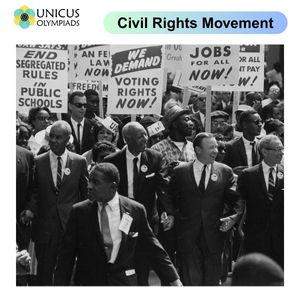

The Civil Rights Movement was a decades-long struggle to end racial discrimination and gain equal rights for African Americans in the United States. It spanned the mid-20th century and aimed to secure legal and social equality for Black people, addressing issues such as segregation, voting rights, and employment discrimination. While the movement primarily focused on the United States, its impact was felt globally, inspiring human rights movements around the world.

The Civil Rights Movement was a transformative period in American history that aimed to eradicate institutionalised racism and promote equality for African Americans. Through peaceful protests, legal challenges, and strong leadership, it achieved significant victories in the areas of voting rights, desegregation, and anti-discrimination. While progress has been made, the struggle for racial equality continues, reminding us of the movement's enduring legacy and the need for ongoing activism.